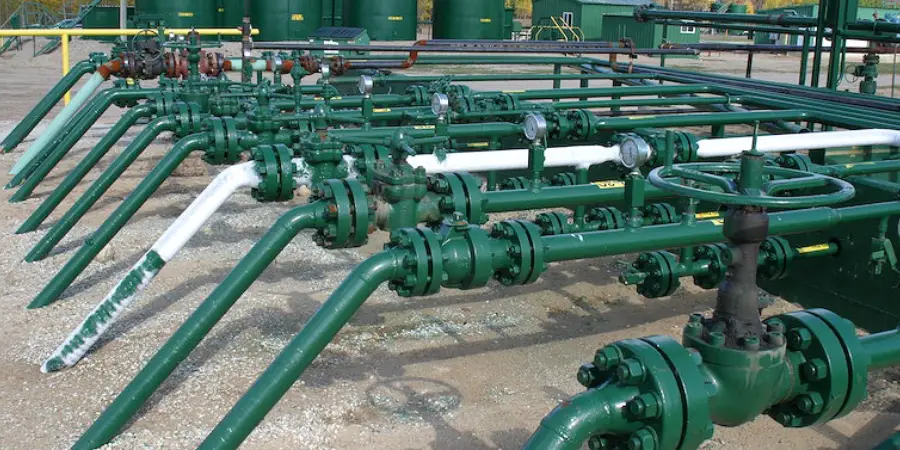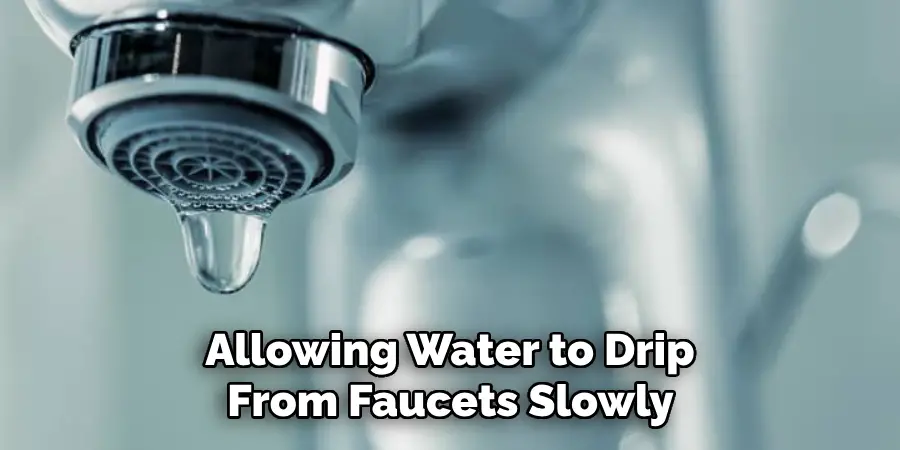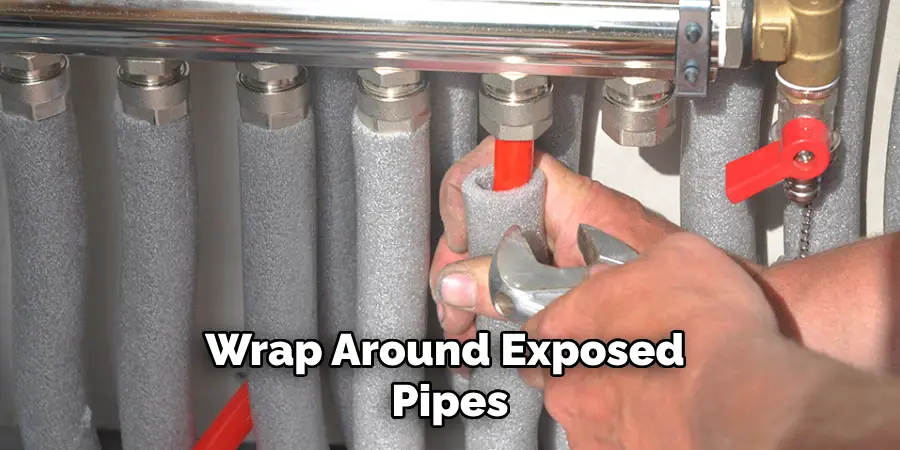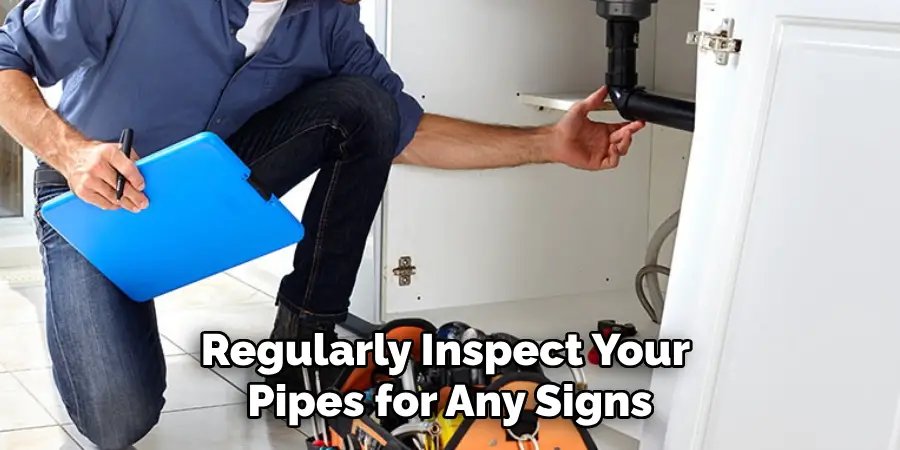Winter can be difficult to keep your pipes protected from freezing temperatures. If you’ve ever experienced the hassle of an unexpected burst pipe, you understand how important it is to ensure your pipes are well-protected against frigid temperatures.

What would happen if all sources of electricity went out during a cold winter storm? Keeping water pipes from bursting in these circumstances may seem daunting, but certain measures can be taken to help reduce the risk! In this blog post, we’ll dive into some tips and hacks on how to keep water pipes from freezing without electricity. So, read on for more information about protecting one of the most important parts of your home or business – your plumbing!
Necessary Items
Before we jump into the different methods for protecting your water pipes, gathering all the necessary items is important. The following list includes some common items you may need to complete these tasks:
- Insulation materials (such as foam tubes or old blankets)
- Heat tape or heat cable
- A portable generator (if possible)
- Water pipe sleeves or wrap
- A reliable water shut-off valve
10 Steps on How to Keep Water Pipes From Freezing Without Electricity
Step 1: Insulate Your Pipes
Insulating pipes is one of the most effective ways to protect from freezing. Foam tubes or old blankets can be wrapped around exposed pipes to help keep them warm. This added insulation layer can help prevent heat loss and keep your pipes from freezing.
Step 2: Seal Any Leaks
Air leaks near pipes can make it easier for them to freeze as cold air can enter through these openings. Use caulk or spray foam to seal any gaps around pipes, windows, or doors.
Step 3: Allow Water to Drip
It may seem counterintuitive, but allowing water to drip from faucets slowly can help prevent frozen pipes. The constant flow of water helps reduce pressure in the pipes, making it less likely for them to freeze.

Step 4: Keep Your Home Warm
To keep your pipes warm, it’s important to maintain a consistent temperature inside your home. Set your thermostat to at least 55 degrees Fahrenheit, even if you’re away from home.
Step 5: Use Heat Tape or Cable
If you have access to electricity, heat tape or cable can be used to keep pipes warm. These devices are specifically designed to protect pipes from freezing and can be easily installed along the length of the pipe.
Step 6: Use a Portable Generator
Access to a portable generator can power heat tape or keep your home warm in case of an electricity outage. Make sure to follow all safety instructions when using a generator carefully.
Step 7: Apply Pipe Sleeves or Wrap
For added protection, consider applying pipe sleeves or wrap around exposed pipes. These insulating materials can provide an extra layer of protection against freezing temperatures.

Step 8: Close Garage Doors
If water pipes run through your garage, keep the doors closed to trap heat and prevent cold air from entering.
Step 9: Know Your Water Shut-Off Valve
In case of a burst pipe or other plumbing emergency, it’s important to know where your water shut-off valve is located. This will allow you to turn off the water supply and prevent further damage quickly.
Step 10: Monitor Weather Conditions
Stay informed about weather conditions in your area, especially during colder winter months. Awareness of potential storms or extreme temperature drops can help you take necessary precautions to protect your water pipes from freezing.
Winter may bring about challenges in keeping your water pipes safe from freezing, but it is possible to prevent any unexpected damage with the right measures. By following these ten steps on how to keep water pipes from freezing without electricity and staying prepared, you can ensure that your home or business remains protected even without electricity.
8 Care Tips for Your Pipes
1. Consistent Temperature
As mentioned, maintaining a consistent temperature inside your home is key to preventing frozen pipes. Make sure to keep your thermostat set at 55 degrees Fahrenheit or above.
2. Regular Inspections
Regularly inspect your pipes for any signs of damage or leaks. Catching these issues early on can prevent more serious problems down the line.

3. Keep Cabinets Open
If you have pipes inside cabinets, keep the doors open to allow warm air to circulate and reach the pipes.
4. Winterize Outdoor Pipes
Before the cold weather hits, properly winterize outdoor pipes by draining and storing away hoses, shutting off exterior water sources, and insulating exposed pipes.
5. Be Mindful of Water Usage
Limit water usage as much as possible during freezing days or nights. This will help reduce pressure in the pipes and decrease the likelihood of them freezing.
6. Properly Store Chemicals
Be mindful of where you store any chemicals or solvents that could potentially freeze and cause damage to your pipes if they leak or spill.
7. Keep a Plumbing Emergency Kit
In a plumbing emergency, having a kit with basic tools and supplies, such as a wrench, plumber’s tape, and spare pipes or fittings, is always helpful.
8. Consult a Professional
If you need help protecting your water pipes from freezing properly, it’s always best to consult a professional plumber who can offer expert advice and assistance. They may also be able to identify any potential issues with your plumbing system and make necessary repairs or upgrades.
To review, there are several ways to keep your water pipes from freezing when you don’t have access to electricity. You can use blankets and towels to insulate your pipes, or if you prefer alternate heat sources such as space heaters, kerosene heaters, gas stoves, or propane torches, you should be sure to protect them with appropriate spacers so as not to cause a fire hazard. Take steps now to winterize your home and safeguard your pipes against winter temperatures and extreme weather.

Frequently Asked Questions
Can Pipes Freeze if I Keep My Thermostat Set at 55 Degrees Fahrenheit?
Stipes can still freeze at this temperature, especially if they are located in uninsulated or poorly insulated areas. Insulating your pipes and following the above steps can provide additional protection.
How Long Does it Take for Pipes to Freeze?
The amount of time it takes for pipes to freeze depends on several factors, including the temperature outside, level of insulation, and water flow. However, in icy conditions, most pipes can start freezing within a few hours.
Can I Use Heat Lamps to Thaw Frozen Pipes?
Heat lamps can be used, but it’s important to use caution and follow safety instructions. If the pipe bursts, heating it too quickly can cause further damage. It may be best to consult a professional plumber in this situation.
How to Keep Water Pipes From Freezing Without Electricity?
As discussed in this document, you can use alternate heat sources such as blankets, towels, or heat tape/cable to keep water pipes from freezing when you don’t have access to electricity. Staying informed about weather conditions and regularly inspecting your pipes can also help prevent any unexpected damage.
How Do You Keep Pipes From Freezing When No Power?
You can use methods such as insulation, heat tape/cable, or alternate heat sources to keep pipes from freezing when you don’t have access to electricity. It’s also important to take preventative measures by regularly inspecting your pipes and staying informed about weather conditions in your area.
Will My Homeowner’s Insurance Cover Frozen Pipes?
It’s important to check with your insurance provider to see what your policy covers. Some may have specific coverage for damage caused by frozen pipes, while others may not. It’s always best to be prepared and take necessary precautions to prevent potential damage.
So remember to follow these tips and stay safe this winter! There’s no need to let frozen pipes dampen your holiday spirit. With the right measures, you can keep your home warm and your water flowing all winter. One should take precautions before the winter season arrives to prevent any potential damage to their water pipes. Remember, it is always better to be prepared and take preventative measures than face costly repairs later. So, stay informed, be proactive, and keep your water pipes safe from freezing this winter!
Conclusion
To recap, there are numerous ways of keeping water pipes from freezing even when on-site electricity sources are not functioning. In such a case, a homeowner can use blow dryers, camp stoves, and space heaters when possible, or they can try to insulate the pipes or faucets with extra layers of clothing. Additionally, if one lives in an area where running water is available, they may be able to transport warm water and pour it over the frozen pipes.
Preparing for a power outage and avoiding frozen water pipes is more manageable than it may seem. Savvy homeowners can ensure their homes will remain well protected during the colder months with proper maintenance, efficient insulation, and proper location selection. Enlisting a licensed plumber can be very beneficial to take the guesswork out of the preparations.
If you live in an area prone to power outages, ensure you are prepared now to enjoy peace of mind through the winter. Be sure to act now and safeguard your home for worry-free winter seasons ahead! By employing these tactics on how to keep water pipes from freezing without electricity and staying vigilant against potential problems caused by freezing temperatures, one can protect their home’s plumbing and keep their family safe throughout the cold winter months. If you’re overwhelmed with managing this process alone, contact the experts. There are plenty of local hardware stores and handymen who can ensure that all the proper prevention takes place before any damage occurs. Don’t let a simple winter pipe repair become a major summer disaster; take action now!

